While buying American things may be in vogue again, national pride hasn’t helped sales of sapphires from the country’s vast Yogo Gulch deposit in Montana. Sitting in a New York mid-Manhattan Citibank vault are some 250,000 carats, mostly rough, of blue and violet sapphire, all that remains of possibly the final attempt to make a go of mining at Yogo.
Citibank acquired the goods in satisfaction of a debt owed by publicly traded Intergem Inc., Denver, the fourth Yogo mining venture since 1956. Intergem closed its Montana sapphire business in 1985 for basically the same reasons as its post-war predecessors: the extremely high cost of mining sapphire in the United States relative to its cost elsewhere. Unlike the alluvial sapphire found in Australia, Sri Lanka and Thailand, Montana’s Yogo sapphire is found embedded in hard rock. That makes mining it expensive.
To get jewelers to pay the much higher price for Montana’s hard-rock sapphire, Intergem embarked on the shrewdest and most daring marketing campaign for Yogo sapphire in its nearly 110-year history. Rather than sell its stones loose, the company launched a line of Yogo jewelry, then tried to capitalize on Montana sapphire’s two greatest strengths: its all-American, all-natural (untreated) status.
Those strengths ultimately proved weaknesses. Few jewelers cared about the Yogo sapphire’s home-country origin when prices for stones from more widely known localities were so much less. And fewer still cared that Yogo sapphires were the only stones of their kind in the world with a blanket guarantee to be spared heat treatment.
Such a no-treatment guarantee was premature, made at a time when gemstone enhancement disclosure was still taboo in the jewelry industry. Thus the guarantee backfired as a marketing tool because it put jewelers in a “Catch-22” dilemma, forcing them to admit most of their other sapphires were treated and thereby inviting a scandal over the concealment of such facts.
Crying the Blues
Raising the sapphire-treatment issue isn’t what sunk Intergem, but it didn’t help to keep the company afloat either, especially after it spilled the beans about the treatment issue to the Wall Street Journal in 1984. Montana sapphire enthusiasts feel the company could have pursued a less positioning policy for the breed than seeking a controversial market niche from for it as the world’s only untreated sapphire. “Freedom from treatment is a virtue only for very large, fine stones,” says one dealer. “But it doesn’t matter much with small stones.”
Unfortunately, Yogo doesn’t produce many large stones. Melee is, and has always been, its forte. That’s because the Yogo Gulch deposit is partly the result of igneous (underground volcanic) activity which pushed the lightest, flattest and most buoyant material up to the surface. Although recent geological surveys indicate sapphire reserves at Yogo go as deep as 7,000 feet, mining there has never gone much below 250 feet. Hence the small size, flat shape and lighter color of most Montana sapphires.
Intergem, as had preceding Yogo sapphire marketers, hoped that some day deeper mining would yield sufficient numbers of larger, fuller and darker stones to shatter the trade’s equation of Montana with pale, shallow-shaped melee. The company never got the chance to prove its hunches. Now it is very likely that no-one else will either.
The possibility that Citibank’s Yogo holdings are, in effect, the Montana mine’s last run makes the stones a significant commodity. It also explains why no one at the institution seems in any great hurry to sell the gems.
A Victim of Its Beauty
Yogo sapphire is as much a victim of its beauty as its past. At their best, the stones have a crisp, violet-blue color that seems almost pastel when compared with the more saturate blues of Burma’s, Kashmir’s and Sri Lanka’s best. For this reason, Yogo beauty doesn’t quite fit in with darker contemporary notions of sapphire excellence. The stones had a much easier time of it in the late 19th century, just after they started coming on to the market.
Discovered by gold prospectors in 1879, Yogo Gulch sapphires weren’t identified as such until 1885. And serious mining there didn’t get underway for nearly 15 years when an English sapphire syndicate began to buy up claims on the mining property.
By 1914, this syndicate owned all claims and was in full production. Meanwhile, George F. Kunz, Tiffany’s visionary vice president and tireless advocate for American gems, had taken a strong liking to the sapphire.
World War I practically halted production at the mine. After the war, serious worker and water shortages, double taxation by the U.S. and British governments, and, finally, a devastating cloudburst in 1923, prevented the Yogo mine from reaching its previous output. In 1929, the mine was closed for good and not worked again until 1956.
Since then, at least four groups—the last, Intergem, launched as a $7.2 million limited partnership in 1980—have successfully mined but unsuccessfully marketed Yogo sapphire. All these ventures were unable to overcome deeply ingrained jeweler preconceptions. Yogo had a reputation for producing mostly flat stones, averaging 10 to 20 points, that were often too baby blue to impress jewelers used to overly dark Australian and Thai melee stones.
To its credit, Intergem fought these preconceptions by, one, offering only stones with full pavilions and, two, offering a majority of round brilliants which made more a virtue of the Yogo’s light and lively color. In the end, however, price was too big a drawback. Better Yogo melee was 40% to 50% more expensive than its nearest counterpart. And at a time, 1985, when fine 1-carat Sri Lankan sapphire was lucky to command $1,000 per carat, Intergem was charging almost double for the best of its very few 1-carat stones. Now, with the steady recovery of the sapphire market since 1986, there may be more price parity.
As for the future of the Yogo deposit, the outlook remains cloudy and uncertain. On the positive side, geological surveys of the area estimate that as much as 28 million carats, a gradually increasing percentage of it large stones, are left in the ground. Yet the cost of mining, progressively higher at lower depths, almost ensures that Yogo stones will never be competitive. This long-standing fact of life is a bar to further mining. Only unlikely catastrophic sapphire production halt in Asia and Australia might tempt another Montana mining venture soon. Like it or not, hard-rock sapphire mining in America has become synonymous with hard luck.
Please note: this profile was originally published in 1988 in Modern Jeweler’s ‘Gem Profiles: The First 60’, written by David Federman with photographs by Tino Hammid.
The 1.47-carat Montana sapphire shown in the header image is courtesy of Roncor Inc., Los Angeles.






